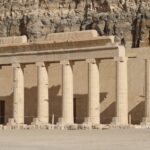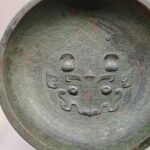Unveiling the Forgotten Empires of South America: Lost Civilizations, Enduring Legacies


Photo by Nicolás Gutiérrez on Unsplash
Introduction: Rediscovering South America’s Forgotten Empires
Long before the rise of the Inca, South America was home to powerful empires whose legacies have endured in stone, myth, and memory. These forgotten civilizations -including the Chachapoya, Tiwanaku, Wari, and Muisca-were not mere footnotes but advanced societies with sophisticated engineering, astronomy, and economic systems. Yet, their stories have often been eclipsed by the fame of the Inca and the devastation wrought by European conquest. This article explores the achievements of these empires, the reasons for their decline, and how you can engage with their enduring heritage today.
The Chachapoya: Warriors of the Clouds
In the misty highlands of northern Peru, the Chachapoya carved their kingdom into the cliffs, earning the name “Warriors of the Clouds” from the Spanish. Their crowning achievement, Kuelap, is a mountaintop fortress built with more stone than the Great Pyramid of Giza. The fortress’s walls, soaring up to 20 meters, were engineered with intricate, defensive entrances that funneled attackers into chokepoints-demonstrating a mastery of strategic architecture [1] .
Inside Kuelap, archaeologists have found round stone houses, ceremonial plazas, and cliffside tombs only accessible by rope-evidence of a society deeply invested in spirituality and ancestor worship. The Chachapoya resisted Inca domination for generations, using guerrilla tactics and their knowledge of the rugged terrain. However, by the late 1400s, the Inca subdued them, and the Spanish would soon erase both cultures through conquest and cultural suppression [1] .
How to Experience Chachapoya Heritage Today: To visit Kuelap and other Chachapoya sites, travelers can search for official guided tours via Peru’s Ministry of Culture or reputable travel companies specializing in Andean archaeology. When planning a trip, prioritize safety, certified guides, and government-approved access to archaeological sites. Local museums in Chachapoyas and Lima host artifacts and detailed exhibitions on this civilization’s history.
Tiwanaku: The Engineers of the Altiplano
The Tiwanaku Empire flourished in the highlands near Lake Titicaca (modern Bolivia) from 300 to 1000 CE. Renowned for their monumental stonework and advanced agricultural systems, the Tiwanaku built their city as a ceremonial and administrative hub that would influence later Andean cultures [2] .
Tiwanaku’s urban design included impressive pyramids, sunken courtyards, and finely carved monoliths aligned with astronomical events. Their agricultural terraces and raised fields (waru waru) allowed them to sustain large populations in a harsh climate. The causes of Tiwanaku’s decline remain debated: theories include prolonged drought, resource exhaustion, and social upheaval. Yet, their stone ruins remain a testament to their ingenuity and vision.
How to Explore Tiwanaku: The ruins of Tiwanaku are accessible to visitors near La Paz, Bolivia. To ensure legitimate and enriching visits, use official government tourism resources or consult the Bolivian Ministry of Cultures and Tourism for up-to-date information. For academic research, UNESCO and reputable university archaeology departments offer extensive online resources and publications on Tiwanaku.

Photo by Arie Oldman on Unsplash
The Wari: Masters of Urban Planning
The Wari Empire (c. 600-1100 CE) predated the Inca and built a network of cities across the central Andes, developing sophisticated road systems and urban centers [1] . Their capital, near modern Ayacucho, Peru, featured multi-story buildings, aqueducts, and administrative compounds.
Wari influence stretched far beyond their core territory, setting patterns for later Inca administration and infrastructure. Archaeological evidence reveals their use of terracing, storage facilities, and complex city planning, yet little is known about their written language or the precise reasons for their gradual disappearance. Environmental changes and internal conflict are likely factors.
Visiting Wari Sites: Wari ruins can be visited with local guides around Ayacucho. For an in-depth understanding, travelers should consult Peru’s Ministry of Culture for authorized site access and local museum exhibits. Academic publications and documentaries on Andean archaeology provide further insights.
The Muisca: Guardians of El Dorado
In the highlands of present-day Colombia, the Muisca Confederation built a culture famed for its wealth, astronomy, and the origin of the El Dorado myth. Unlike their stonemason contemporaries, the Muisca specialized in salt extraction, goldwork, and sophisticated trade networks. Rituals at Lake Guatavita, where newly crowned rulers would cover themselves in gold dust and offer treasures to the gods, fueled Spanish legends of a city of gold-El Dorado [1] , [3] .
The Muisca’s political organization was an alliance of chiefdoms with advanced calendars, religious sites, and a vibrant economy. Spanish conquest led to the suppression of their traditions and the near loss of their language, Muysccubun. Nonetheless, their influence persists in Colombian culture and place names today.
Engaging with Muisca Heritage: The Gold Museum (Museo del Oro) in Bogotá, operated by the Banco de la República, offers the most extensive and verified collection of Muisca artifacts. To learn more, visitors can explore museum exhibitions, virtual tours, and official publications. To visit Lake Guatavita and related sites, consult Colombian tourism authorities for regulations and tour options.
Why Did These Empires Fade?
Unlike the dramatic fall of the Inca under Spanish conquest, many forgotten empires of South America declined gradually. Environmental changes, shifting trade routes, and internal conflict weakened their cohesion. Later, European colonization devastated populations through disease and violence, erasing much oral and written history [2] , [3] .
Today, archaeologists and Indigenous communities are working to revive lost languages, protect sacred sites, and share these stories with the world. Many governments and international organizations have established cultural preservation programs. To support these efforts, consider visiting official cultural institutions, participating in guided heritage tours, and supporting Indigenous-led initiatives.
How to Access More Information and Engage Further
For those seeking to learn more or get involved:
- Search for official cultural heritage programs via the Ministry of Culture websites in Peru, Bolivia, and Colombia for up-to-date visitor guidelines and educational resources.
- Contact local museums (such as the Museo del Oro in Bogotá or Museo Nacional de ArqueologÃa in La Paz) for current exhibitions and outreach programs.
- University archaeology departments often provide free online lectures and publications about ancient South American civilizations. Search for “Andean archaeology lecture series” or “pre-Inca empires academic resources.”
- For those interested in responsible tourism, look for certified guides and tours operating under government regulations to ensure the preservation of sites and support for local communities.
If you are unable to find official links, consider searching using terms like “Peru Ministry of Culture ancient sites”, “Bolivia Tiwanaku tourism”, or “Colombia Muisca heritage programs” for verified, authoritative portals.
Key Takeaways and Continuing the Journey
The forgotten empires of South America were innovators, builders, and visionaries whose stories still resonate. Their cities, rituals, and myths provide a window into the continent’s rich pre-Columbian past. By visiting official museums, supporting cultural preservation, and staying informed through reputable academic and government sources, you can help ensure these legacies endure for future generations.






